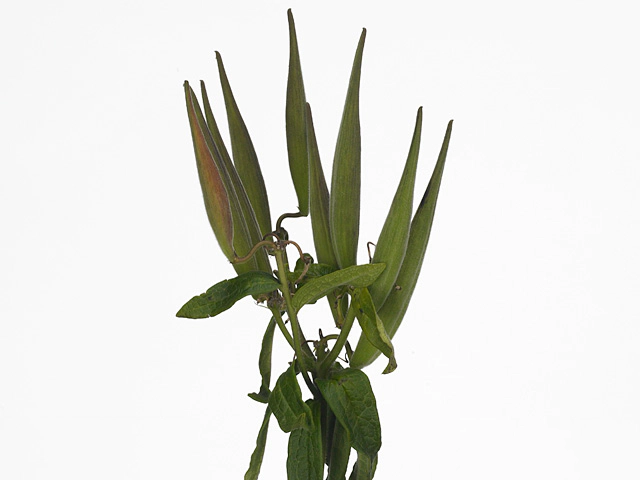Asclepias tuberosa

| Fruit type | Pod |
| Leaf margin | Entire |
| Leaf type | Foliage leaf |
| Winter hardness | Excellent (USDA-zone 1,2,3,4) |
| Leaf, general shape | Lanceolate |
| Plant height | 20 - 30 cm; 50 - 60 cm |
| Flowering month(s) | July; August; September |
| Structure (tissues) | Subshrubby/semi-shrubby |
| Light conditions | Sunny |
| Leaf division | Simple |
| Plant, growth type | Erect |
| Toxicity (if consumed) | Fairly |
| Moisture requirements | Well-drained |
| Soil type | Humus rich; Sandy |
Asclepias Tuberosa, commonly known as Milkweed or Butterfly Weed, is a beautiful plant that boasts a variety of attractive features. This perennial plant is native to North America and is popular among gardeners and nature enthusiasts alike.
One notable characteristic of the Milkweed plant is its fruit type, which is a pod. These pods are often clustered together and contain the seeds of the plant. The pods, when mature, split open to release fluffy seeds that are easily carried by the wind.
The leaves of the Milkweed plant have an entire margin, meaning that their edges are smooth and uninterrupted. The general shape of the leaves is lanceolate, which is long and narrow with a pointed tip. The leaves are arranged alternately along the stem and have a simple division.
The growth type of the Milkweed plant is erect, meaning it stands tall and upright. It typically reaches a height of 20 to 30 cm for the foliage leaf and 50 to 60 cm for the overall plant height. This makes it a great choice for adding vertical interest to a garden or landscape.
Milkweed is well-known for its beautiful flowers that bloom during the months of July, August, and September. The flowers are vibrant in color and are a magnet for butterflies and other pollinators. The plant's name, Butterfly Weed, is a testament to its ability to attract these delicate winged creatures.
In terms of its plant structure, Milkweed is classified as subshrubby/semi-shrubby. This means that it has woody stems at the base, but the upper portion of the plant is herbaceous. This combination gives the plant a sturdy base while also allowing it to produce new growth each year.
When it comes to its preferred growing conditions, Milkweed thrives in sunny locations. It requires well-drained soil, preferably with a humus-rich composition. Sandy soil also works well for this plant. In terms of moisture requirements, Milkweed prefers moderately moist soil but can tolerate some dryness.
It's important to note that while Milkweed is a beautiful and beneficial plant for pollinators, it does have some toxicity if consumed. This is mainly due to the presence of cardiac glycosides in the plant, which can be harmful if ingested in large quantities. However, it's worth mentioning that many animals, including monarch butterflies, have co-evolved with Milkweed and have developed tolerance or even reliance on its toxic compounds.
Overall, Asclepias Tuberosa, or Milkweed, is a stunning addition to any garden or landscape. Its attractive foliage, vibrant flowers, and ability to attract butterflies make it a popular choice for both aesthetic and ecological reasons. By providing a habitat for pollinators, Milkweed plays an essential role in supporting biodiversity and maintaining a healthy ecosystem.
Market availability index by month:
| Jan. | Feb. | Mar. | Apr. | May | Jun. | Jul. | Aug. | Sep. | Oct. | Nov. | Dec. |
|---|---|---|---|---|---|---|---|---|---|---|---|
| 2 | 3 | - | - | 2 | 2 | - | - | - | - | 4 | 3 |